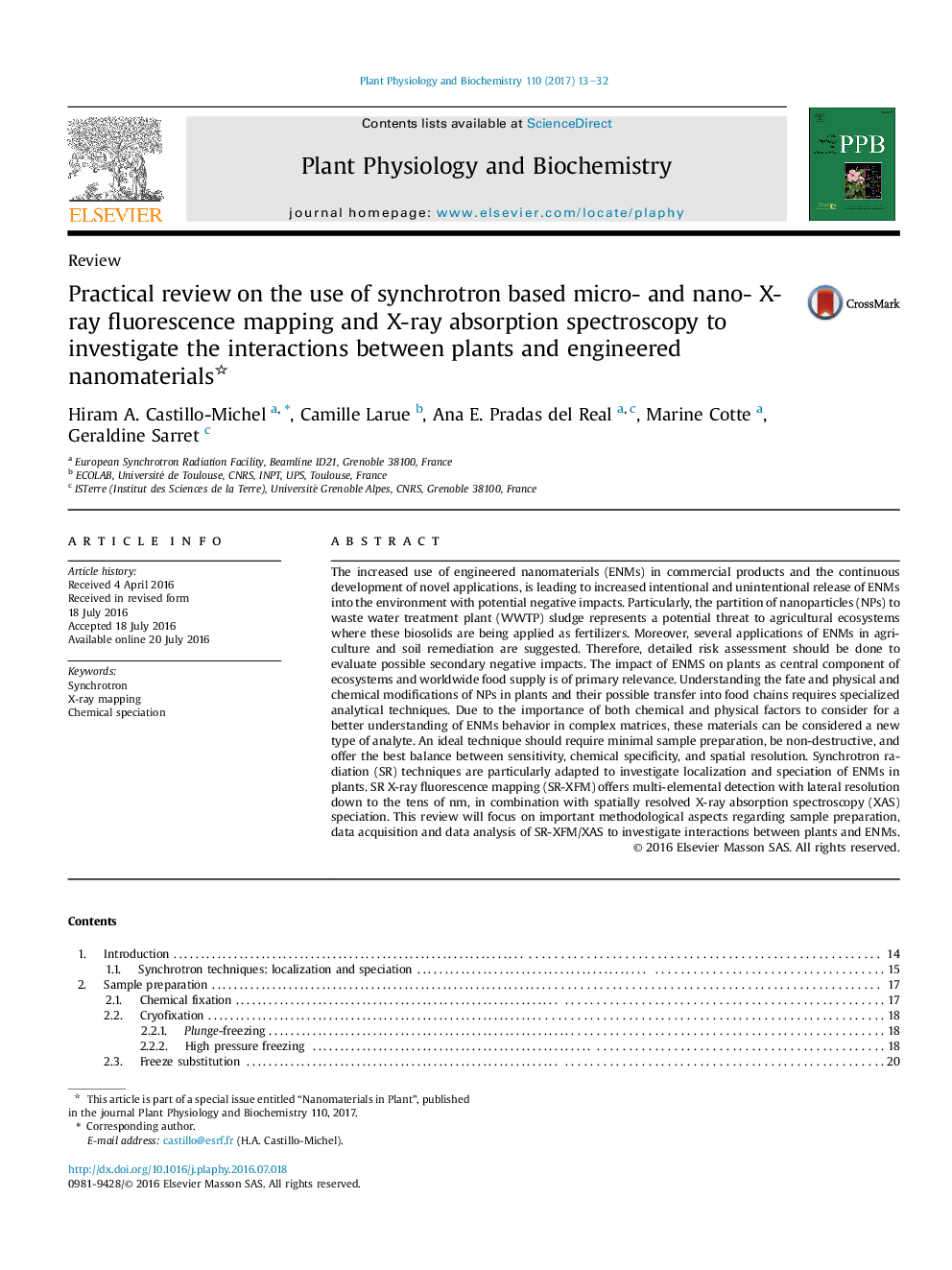| Article ID | Journal | Published Year | Pages | File Type |
|---|---|---|---|---|
| 5515324 | Plant Physiology and Biochemistry | 2017 | 20 Pages |
â¢Uptake and transport of ENMs in plants can be studied with synchrotron based micro/nanoprobes.â¢X-ray fluorescence maps and absorption spectroscopy provide elements distribution and speciation.â¢Sample preparation should preserve morphology, elements distribution and speciation at all scales.â¢Cryogenic conditions maintain samples close to in-vivo state and reduce radiation damage.â¢Data analysis software should handle large hyperspectral data sets.
The increased use of engineered nanomaterials (ENMs) in commercial products and the continuous development of novel applications, is leading to increased intentional and unintentional release of ENMs into the environment with potential negative impacts. Particularly, the partition of nanoparticles (NPs) to waste water treatment plant (WWTP) sludge represents a potential threat to agricultural ecosystems where these biosolids are being applied as fertilizers. Moreover, several applications of ENMs in agriculture and soil remediation are suggested. Therefore, detailed risk assessment should be done to evaluate possible secondary negative impacts. The impact of ENMS on plants as central component of ecosystems and worldwide food supply is of primary relevance. Understanding the fate and physical and chemical modifications of NPs in plants and their possible transfer into food chains requires specialized analytical techniques. Due to the importance of both chemical and physical factors to consider for a better understanding of ENMs behavior in complex matrices, these materials can be considered a new type of analyte. An ideal technique should require minimal sample preparation, be non-destructive, and offer the best balance between sensitivity, chemical specificity, and spatial resolution. Synchrotron radiation (SR) techniques are particularly adapted to investigate localization and speciation of ENMs in plants. SR X-ray fluorescence mapping (SR-XFM) offers multi-elemental detection with lateral resolution down to the tens of nm, in combination with spatially resolved X-ray absorption spectroscopy (XAS) speciation. This review will focus on important methodological aspects regarding sample preparation, data acquisition and data analysis of SR-XFM/XAS to investigate interactions between plants and ENMs.
Graphical abstractDownload high-res image (217KB)Download full-size image
